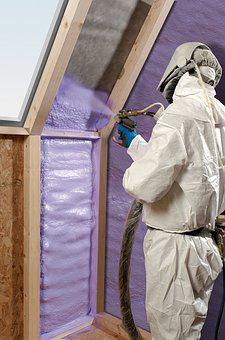Polyurethane is a polymer composed of repeating units of carbamate groups. It is a versatile plastic used in many different applications, including as an insulation material, flexible tubing, elastomers, and adhesives. Polyurethanes are made by reacting a polyisocyanate with a polyol.
The properties of a polyurethane depend on the types of isocyanates and polyols used to make it. Polyurethanes can be rigid or flexible, and are frequently used in coatings, adhesives, elastomers, and sealants. Rigid polyurethanes are used in insulation materials, such as rigid foam insulation. Flexible polyurethanes are used in applications such as cushions, car seats, and upholstery.
background
Polyurethanes are made by reacting a polyisocyanate with a polyol. The most common isocyanates used to make polyurethanes are toluene diisocyanate (TDI) and methylene diphenylisocyanate (MDI). The most common polyols used are polyethers and polyesters.
The reaction of the isocyanate and polyol creates a polymer with a backbone of carbamate groups. The number and type of isocyanate and polyol used determine the properties of the resulting polyurethane. Polyurethanes are versatile plastics that can be rigid or flexible, and are used in a variety of applications.
Rigid Polyurethanes
Rigid polyurethanes are used in insulation materials, such as rigid foam insulation. Rigid polyurethanes are made by reacting a polyisocyanate with a polyol. The most common isocyanates used to make rigid polyurethanes are toluene diisocyanate (TDI) and methylene diphenylisocyanate (MDI). The most common polyols used are polyethers and polyesters.
Rigid polyurethanes are used in insulation materials because they have a high thermal resistance. Rigid polyurethanes are also used in building construction and automotive applications.
Flexible Polyurethanes
Flexible polyurethanes are used in applications such as cushions, car seats, and upholstery. Flexible polyurethanes are made by reacting a polyisocyanate with a polyol. The most common isocyanates used to make flexible polyurethanes are toluene diisocyanate (TDI) and methylene diphenylisocyanate (MDI). The most common polyols used are polyethers and polyesters.
Flexible polyurethanes are used in applications where a flexible, durable material is needed. Flexible polyurethanes are also used in adhesives, sealants, and coatings. Polyurethanes are made by reacting a polyisocyanate with a polyol. The properties of a polyurethane depend on the types of isocyanates and polyols used to make it. Polyurethanes can be rigid or flexible, and are frequently used in coatings, adhesives, elastomers, and sealants. Toluene diisocyanate (TDI) and methylene diphenylisocyanate (MDI) are the most common isocyanates used to make polyurethanes. Polyethers and polyesters are the most common polyols used. The reaction of the isocyanate and polyol creates a polymer with a backbone of carbamate groups. The number and type of isocyanate and polyol used determine the properties of the resulting polyurethane.
Polyurethane is a polymer composed of organic units joined by carbamate (urethane) links. Polyurethane polymers are formed by combining a diisocyanate or a polymeric isocyanate with a diol or a hydroxy-terminated prepolymer.
Properties
Polyurethanes have many properties that make them one of the most versatile plastic materials available. They can be designed to be rigid or flexible, transparent or opaque, thermoplastic or thermosetting, and much more. Polyurethanes are also strong and durable, making them ideal for a wide range of applications.
Applications
Polyurethanes are used in a variety of applications, including:
-Foam insulation for homes and businesses
-Flexible foam for cushions, car seats, and mattresses
-Rigid foam for building construction and insulation
-Adhesives
-Coatings
-Sealants
-Elastomers
-Spandex fibers
Polyurethane foam is one of the most common applications for polyurethanes. This type of foam is used in a variety of products, including:
-Furniture
-Bedding
-Carpeting
-Packaging
-Automotive components
Polyurethane foam can be manufactured in a variety of densities and configurations, making it ideal for many different applications.
Polyurethane adhesives are another common application for this material. Polyurethane adhesives are used to bond a variety of materials, including:
-Wood
-Plastic
-Metal
Polyurethane is a type of plastic that is used in many different products. It is strong and durable, making it ideal for items that see a lot of wear and tear. Polyurethane can be either rigid or flexible, depending on how it is made.
Uses:
Polyurethane is used in a variety of products, including:
-Furniture
-Automotive parts
-Electrical insulation
-Paint
-Adhesives
Benefits:
Polyurethane has many benefits, including:
-It is strong and durable.
-It can be made in a variety of colors.
-It is easy to clean.
-It is resistant to stains and scratches.
Drawbacks:
Polyurethane does have some drawbacks, including:
-It can be expensive.
-It is not biodegradable.
-It can be flammable.
how many coats polyurethane
Typically, you will need to apply two to three coats of polyurethane to get the desired level of protection. Polyurethane can be applied with a brush, roller, or sprayer.








